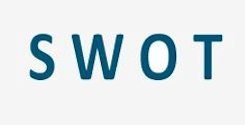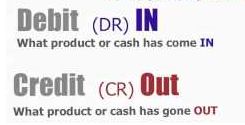Fritz Sybergs Vej 9
DK 8270 Hojbjerg
Scandinavia
info@dynamicbusinessplan.com


SWOT Analysis + PO
A SWOT analysis offers you an overview of a small company´s state of affairs at a given time.
Having evaluated and recognised your company´s state of affairs, you are in a
better position to work out a strategy for your future business operations.
A SWOT can also be used to evaluate other things than a private company. It
could e.g. help you evaluate a new product or a marketing campaign.
SWOT + PO
This SWOT analysis is expanded to include PO (Possibilities & Obstacles).
This is done in order to qualify the issues in the OT (Opportunities, Threats)
and it may point to issues in the strategy.
It works like this
The SWOT + PO analysis is structured as shown below:
- The company´s internal capabilities (Strengths & Weaknesses)
- External parameters affecting the company (Opportunities & Threats)
- Qualifying the Opportunities & Threats with Possibilities & Obstacles
|
INTERNAL - within the business’ reach |
|
|
STRENGTHS |
WEAKNESSES |
|
Strengths are what your company
is good at at present. It is a snap photo of the present situation. |
Weaknesses could be something your company does not have at the moment or is less good at compared to your competitors.
Such as:
|
|
EXTERNAL – outside the business’s reach |
|
|
OPPORTUNITIES |
THREATS |
|
Opportunities in the market can
be seized or missed. You cannot change them, you have to adapt to them. |
Threats are external parameters
threatening your company´s business strengths. |
+ PO
Go back and look at your OT (Opportunities and Threats). You have probably mixed the external opportunities and threats with possibilities and obstacles (PO) within the company.
- Move all issues that the company can have influence on from Opportunities to Possibilities
- Move all issues that the company can have influence on from Threat to Obstacles
You will now be able to focus on the external OT issues that you have no
influence on.
The PO might point out some of the issues your company could work on to
overcome some of the challenges.
|
INTERNAL - within the business’ reach |
|
| POSSIBILITIES | OBSTACLES |
| Possibilities are
what the company could be good at if plans and hard work turned out
right. Such as: Become the chairman of the local football club, your daughter steps into the company, you persuade the shop owner across the street that you can take over the lease or you finally make your invention work, you get an article in the perfect industry magazine …. |
Obstacles are
what could happen if things don’t turn out as you expect and
planned. Such as: You fail your exam, don’t manage to make your obsolete machine work, you don’t have time enough to work hard in your company, old debt suddenly has to be paid, you have to leave the country …. |
How to use SWOT + PO
The SWOT + PO analysis is a tool allowing you to evaluate your company and
may give you the possibility to see directions for your company´s future.
The most important questions that the SWOT analysis sheds light on:
- Does the company have core areas to base a strategy on?
- Does the company have weaknesses that make it vulnerable and are there means to cure this?
- What market opportunities does your company have with its present knowledge and resources? (Opportunities not backed by resources are mere illusions)
- What external threats must the company be aware of?

Strategy
Opportunities and Threats affect your company´s rate of activity.
Thus, a strategy must include the below features:
- Focused on market opportunities using your company´s strength
- Be a defence against external threats
Core business
The secret of all strategic planning is the ability to boil down
your company´s strengths of management, services/products,
marketing, development, etc. to your company´s core business. The
core business is the specific variation of your product or service
that makes it unique compared to other similar products.
The core business of www.dynamicbusinessplan.com is to “Deliver
business essentials for entrepreneurs”
Core Competence
Core competence is the features that make your company differ
from your competitors.
Often, the core competence is to be found in a person possessing,
great trade skills or specialised manufacturing know-how within an
area.
Only rarely does core competence derive from a physical object.
There are many features of core competence:
- Professional and competent manufacturing process / performance of service
- Friendly and competent staff
- Confidence-inspiring sales attitude
- Profound expertise
- Growth orientation
- Concise sales letter formulating capacity
- Gift of seizing business opportunities
- Effective salesmanship
- One of three with expert knowledge within a field
- Well-situated premises
- Large network within the product line

Vision without execution is hallucinations
- Thomas Edison, inventor





































